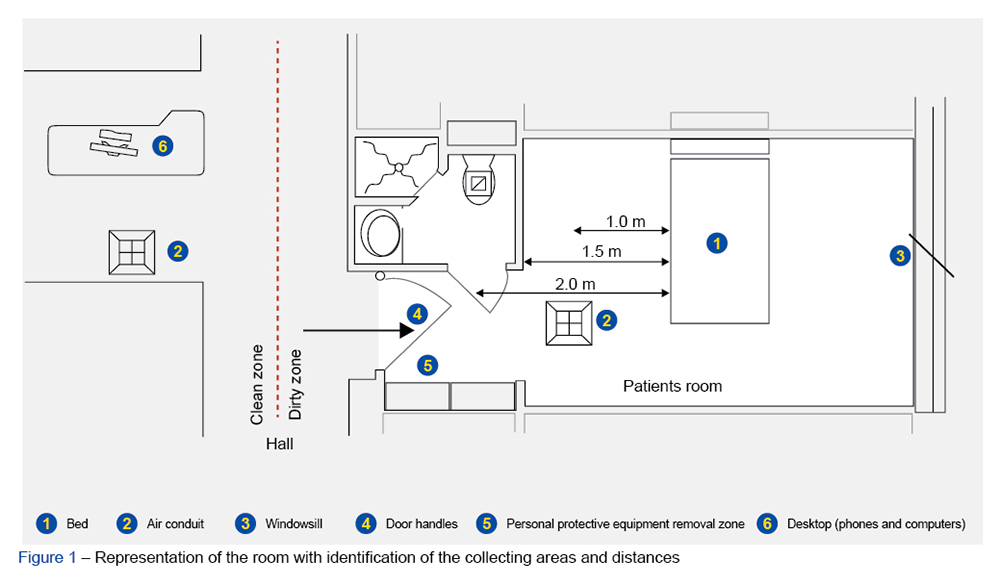SOCIAL MEDIA
Portuguese Medical Association's Scientific Journal

Introduction: Transmission of COVID-19 through close contact and droplets is well established, but the influence of aerosol and surface contamination remains to be determined. Literature is scarce and inconsistent about the viable virus particles free-distance from infected patients, as well as about different swabbing methods for surface contamination evaluation. The aim of this study was to evaluate the most sensitive method for the assessment of surface contamination, classify the likelihood of environmental contamination in risk zones and compare the environmental contamination between oxygenation and ventilatory support.
Material and Methods: Swabs from potentially contaminated surfaces in a COVID-19 ward, with patients treated with different types of oxygen and ventilatory support, were collected. Three types of swabs were compared in order to evaluate the most sensitive collection method. For risk zone categorization, areas were divided according to the distance from the patient.
Results: Of the 63 swabs collected, 17 (27%) tested positive for the presence of SARS-CoV-2. The highest positivity rate was observed with the sterile premoistened swab with saline (n = 8; 38%), but without statistically significant differences. The highest number of positive samples were collected from the high-risk zones, specifically those located one meter from the patient (n = 13; 48%), with statistically significant differences. Only the rooms of patients supported with non-invasive ventilation or high-flow nasal cannula had evidence of bedroom contamination, with 45% and 27% of swab positivity, with statistically significant differences.
Discussion: Our findings favour the premoistened swab without transport medium for surface contamination assessment, even though without statistical differences. A statistically significant trend supporting the division in risk zones, according to the distance from the patient, was also identified. The higher positivity rate from the non-invasive ventilation and high-flow nasal cannula bedrooms suggests a significant association between ventilatory strategies and surface contamination, probably due to higher particle dispersion.
Conclusion: Our findings support the use of the sterile premoistened swab without preservation medium, the classification of risk areas considering the distance from the patient, and the variability of RNA dispersion between oxygenation and ventilatory support.